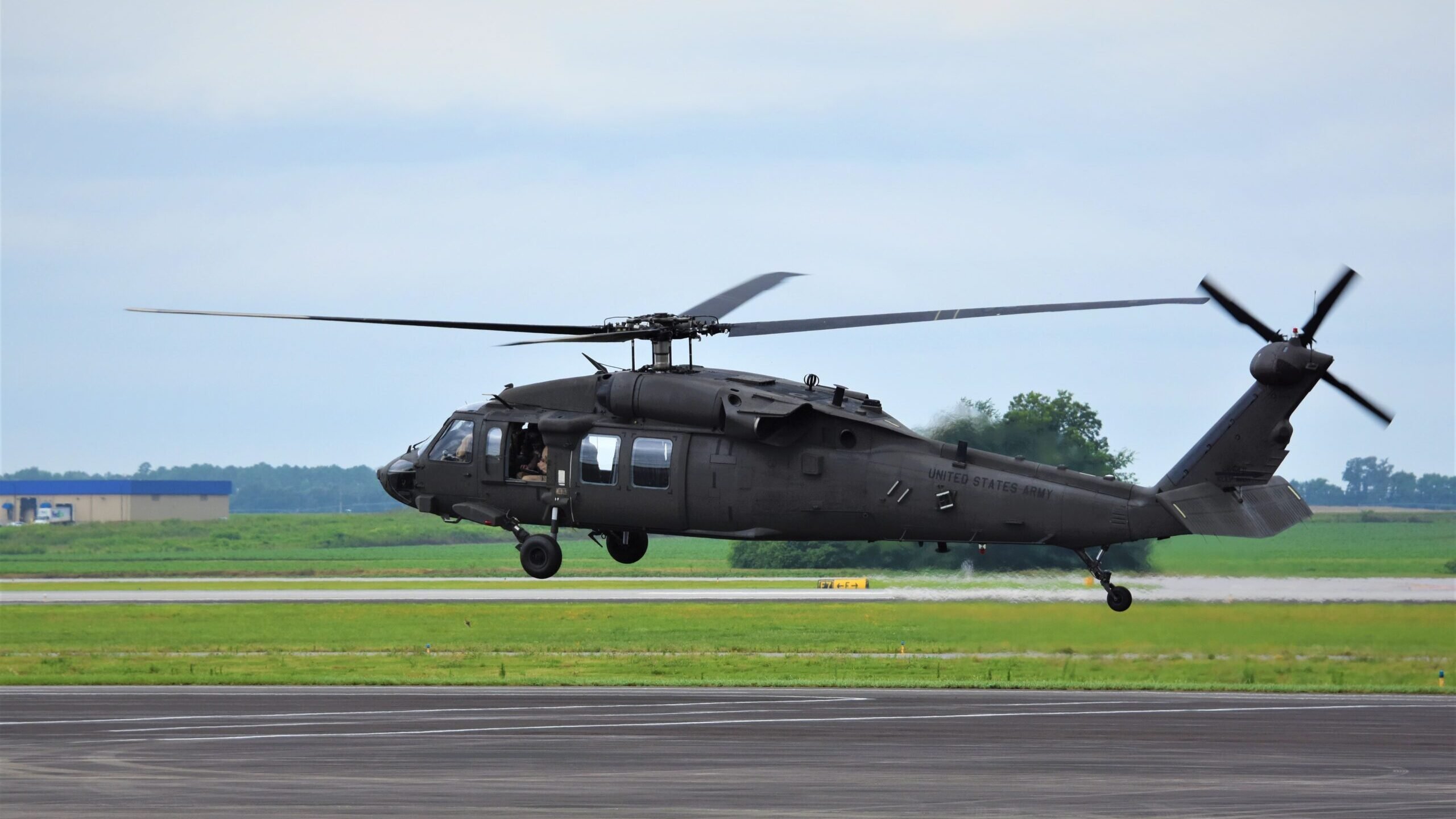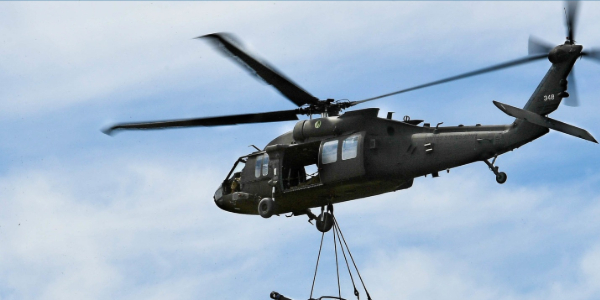Upkeep and Maintenance for UH 60 Helicopters
Upkeep and Maintenance for UH 60 Helicopters
Blog Article
Exploring the Ingenious Innovation Behind Aircraft Layout and Design
The area of airplane style and engineering is experiencing a transformative change driven by cutting-edge technologies that boost performance, sustainability, and performance. Advanced products such as carbon fiber compounds and titanium alloys are setting new requirements, while aerodynamic innovations and fabricated intelligence are simplifying processes and boosting results. As the sector grapples with the obstacles of ecological responsibility, advancements in lasting aeronautics innovations guarantee to reshape the future. Nonetheless, the effects of these innovations prolong past efficiency metrics; they may redefine the very nature of flight. What might this indicate for the market all at once?
Advanced Products in Aircraft Style
Just how can the assimilation of advanced materials change airplane style? The consolidation of innovative products, such as carbon fiber composites, titanium alloys, and progressed ceramics, plays a critical duty in improving aircraft efficiency and effectiveness.
Additionally, innovative materials display enhanced resistance to rust and tiredness, causing reduced upkeep expenses and extensive life span. As an example, using titanium in important elements aids stand up to severe temperatures and anxieties, while carbon fiber compounds provide flexibility in style and production procedures. This adaptability permits for more aerodynamic forms, adding to superior efficiency attributes.
Moreover, the integration of clever products, which can change properties in reaction to outside stimulations, opens up brand-new methods for adaptive systems in airplane design. uh 60. These technologies assure not just to improve security and operational performance yet additionally to add to sustainability initiatives by decreasing ecological impact via lowered discharges. In summary, progressed materials are redefining the landscape of aircraft design, paving the means for a lot more effective, durable, and environmentally friendly air travel options
Wind Resistant Innovations for Performance
Wind resistant innovations play a critical role in boosting aircraft efficiency, significantly influencing fuel usage and general performance. Breakthroughs in airfoil style, such as the intro of supercritical wings, allow for optimized lift-to-drag proportions, lowering drag at transonic rates. These developments enable aircraft to maintain higher speeds with lower fuel expenditure, straight influencing functional expenses and ecological sustainability.
Moreover, the integration of winglets has proven efficient in mitigating vortex-induced drag at the pointers of wings, even more boosting fuel efficiency - uh 60. This style adjustment causes a reduction in wake disturbance, adding to improved aerodynamic performance during cruise problems

Additionally, computational fluid dynamics (CFD) tools have actually transformed the screening and improvement of wind resistant forms, enabling precise simulations of air flow around aircraft (uh 60). This makes it possible for designers to introduce continually, making sure that modern aircraft not just fulfill governing standards yet also push the boundaries of effectiveness in aeronautics

Role of Computer Simulations
Computer system simulations have come to be an indispensable tool in the area of airplane layout, enabling engineers to carry out thorough analyses and optimizations of numerous design aspects. These simulations permit for the virtual screening of aerodynamic homes, structural integrity, and performance metrics long prior to physical models are constructed. By utilizing computational fluid dynamics (CFD) and finite component analysis (FEA), designers can predict how air streams around the airplane and how different materials will certainly react to anxiety and strain.
Furthermore, computer simulations help with the exploration of a vast array of variables and scenarios, speeding up the style procedure and minimizing costs connected with physical screening. This ability not just improves the accuracy of predictions relating to aircraft behavior however additionally provides insights right into prospective layout enhancements that might not be promptly noticeable via traditional techniques.

Furthermore, simulations assist make sure compliance with stringent safety and security laws by allowing engineers to identify and special info rectify potential concerns early in the design phase. The combination of simulation innovations into the aircraft layout procedure highlights the significant advancements in design techniques, eventually adding to the advancement of much safer, a lot more reliable, and environmentally pleasant aircraft.
Artificial Knowledge in Design
Man-made knowledge (AI) is reinventing the engineering landscape, particularly in aircraft design, by maximizing and improving decision-making processes layout workflows. Via artificial intelligence formulas, AI can official statement evaluate substantial datasets, discovering patterns and insights that educate style options and enhance total efficiency.
AI applications in airplane style include generative style, where formulas produce multiple layout choices based upon defined specifications, allowing engineers to assess a more comprehensive variety of opportunities. This not only speeds up the design stage but likewise makes certain that the final products satisfy strict performance and safety criteria.
Furthermore, AI-driven predictive analytics promote upkeep scheduling by evaluating historical information and anticipating possible failings. This positive technique lowers downtime and enhances aircraft dependability.
Furthermore, AI aids in simulation and modeling, allowing designers to check layouts under different problems without the demand for physical prototypes. This ability reduces development timelines and minimizes expenses connected with conventional screening techniques.
Lasting Aeronautics Technologies
The answer exists in the fostering of sustainable aeronautics modern technologies that prioritize efficiency and lower carbon emissions. Developments such as sustainable air travel fuels (SAFs), which are obtained from renewable resources, have actually arised as an essential part in accomplishing lower lifecycle exhausts.
Moreover, innovations in aircraft style, click now such as the advancement of lighter materials and even more aerodynamically efficient forms, contribute to enhanced fuel performance. Electric and hybrid propulsion systems are also obtaining traction, providing a pathway to decrease dependence on fossil gas and minimize greenhouse gas emissions.
The integration of these technologies is supported by regulatory structures and sector partnerships aimed at establishing enthusiastic sustainability targets. Additionally, electronic tools like information analytics and man-made knowledge can enhance trip procedures, even more boosting fuel performance. By accepting lasting methods and modern technologies, the aviation sector can not only fulfill the growing need for flight yet additionally play a crucial role in resolving climate modification, making certain a more lasting future for air transport.
Verdict
The convergence of innovative materials, wind resistant developments, and advanced modern technologies marks a substantial development in aircraft style and design. The assimilation of carbon fiber compounds, titanium alloys, and AI-driven procedures not only enhances efficiency and performance yet likewise streamlines operations and anticipating maintenance.

Computer system simulations have actually come to be an essential tool in the field of aircraft design, enabling engineers to carry out detailed evaluations and optimizations of numerous design facets.The merging of innovative materials, aerodynamic developments, and innovative innovations marks a significant advancement in aircraft design and engineering.
Report this page